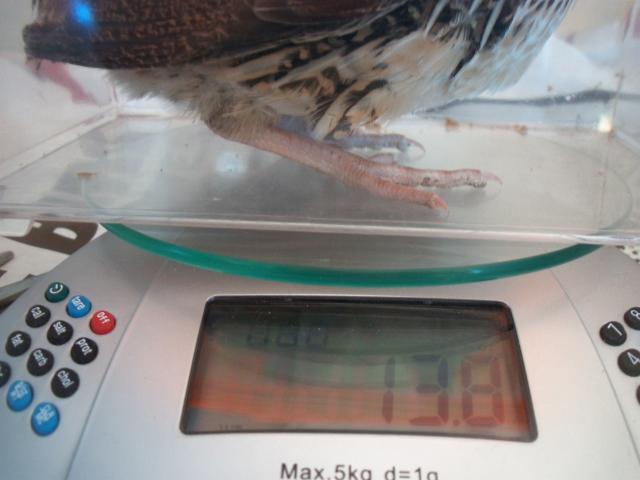Quote:
I have no problem with the 600g weight. I know its possible. The old standard weights were changed with the birds that came from Texas A&M and I am sure there will be a new standard set.
Here's the first standard set in the U.S.A.
http://jhered.oxfordjournals.org/co...html?sid=b25a2f2d-763d-4a47-b14f-5b8f884754c7
The thing with Coturnix is that they growout untill they slow down at around 10 weeks old and stop growing at about 12 weeks. Their top weight.
The breeders kept are weighted to monitor their health. The norm is that they loose weight over time, due mostly to calcium loss. So, I have no problem believing in a 21 oz well kept breeder.
Actually there is a strain here in town that is being kept and are processed at 22 Oz live weight. I know what strain they come from and I am going to try to get a few eggs to incorporate into my line.
If this becomes the norm, then a new standard will have to be set, for the 3rd time.
that report looks like they started with 4 oz 124 gram birds and wound up with 10 oz 291 gram birds they look like they were weighing them at 6 weeks
I would say you have it about right. The old standard wasn't all that big. Surprised me. I put this out there for you. Your talk about UC Davis got me digging, because when I lived in CA few birds were to be found and they were small. They have come a long ways.
Read further into the report. It explains why you were having a hard time getting the size. But I don't know how you can tell without blood work. How you can tell from a Pharoah size if its got the genetics to go big.
I do know that in the migrating birds, they don't all migrate. Some stay behind and raise their young in place. Those are the birds they are talking about that they used to start the Jumbos
and later the Giants of that time that were developed from the Jumbos. But they did blood work on them to pick their breeders for the projects.
Coarse now what they considered Giants are Jumbos so of coarse the Giants have to be bigger. That report is from 1992 - not really all that long ago.






